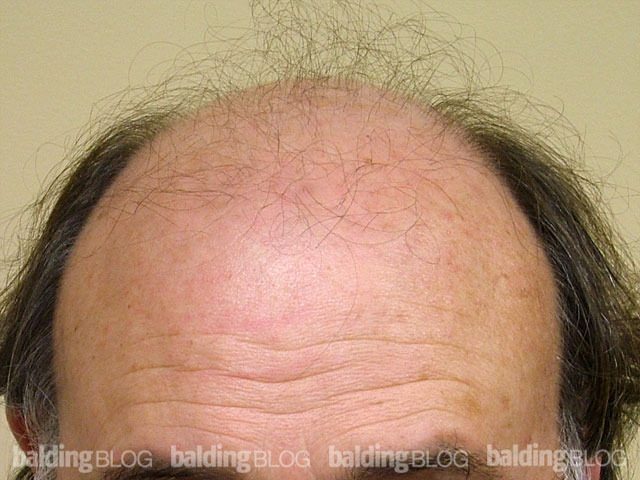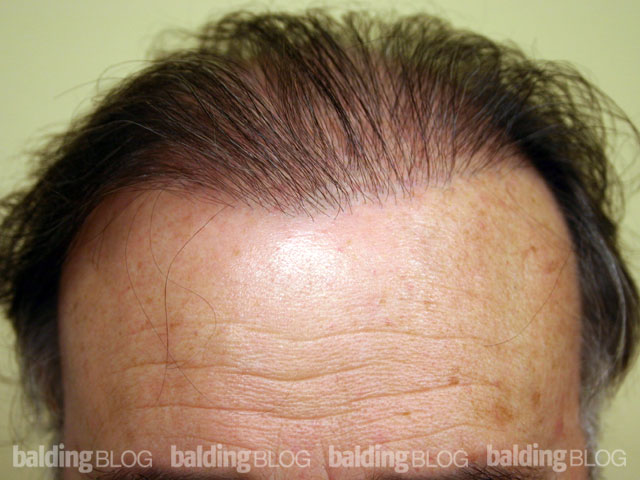I had 3 strip hair transplants in the late 1990s, they came out OK but being that I’m around a 5-6 on the Norwood scale and got only a little more than 3,000 grafts total, it’s just too dang thin. All-in-all I’ve never quite decided for sure whether going the HT route was worth it or not, sometimes I think yes, sometimes I should have just shaved my head.
Anyway I’ve researched FUE quite a bit over the past year or so and have signed up for a 1,000-1,200 FUE procedure over 2 days with a doctor who is known as being one of the best in the business at FUE. My goal is fairly modest I think — no crown work or lowering the hairline or anything, just adding grafts on top towards the front to make it look less thin (I won’t even say thicker, I’ll settle for less thin). I’m hoping this final result meets my expectations (which I truly believe are realistic and not at all grandiose).
Does my plan sound reasonable to you? Or would you say there’s a big chance I’ll end up in the same unenthusiastic place about the whole thing, minus $8-$10K and a few more weeks of my life?
You put me in a very precarious position with your question. While it is understandable that you are seeking a second opinion on your decision to have an FUE procedure, you are asking me if the clinical judgment made by your doctor was correct without a formal examination from me. If you would like a second opinion, please make an appointment to see me.
That being said, if your doctor cannot answer the same questions you are posing to me then there is a communication issue. As a Class 6 pattern with 3000 grafts already in, I would expect (assuming that a complete pattern balding was your ‘before’ status) that the addition of 1000 grafts now to the 3000 that is already there may make only a marginal impact on the thin appearance. There are tricks in the art of this process that can make 1000 grafts act like 2000 grafts. Of course, what I am saying does not reflect the characteristics of your hair or its thickness, or the surgeons plan or in particular what you look like now and where these grafts are going to be put.

 Here’s a before and after picture set that I wanted to show. Though you can’t see it in the photos because I can’t show his face, the smile he showed me really says something about the value of one session of 3539 grafts just one year earlier. The patient’s crown still needs more coverage and he is expecting to do one more session in the upcoming month. Very bald people take a large number of grafts and this man will require between 6000-7000 grafts total, which should complete the entire restoration process. It is important to take note of the high number of grafts required to fill in a Class 6/7 balding pattern patient. Some doctors say it can be done with 500-2000 grafts, but that type of lowballing is not the reality, as shown here. This man has a very fine, gray, slightly wavy hair. His wife says that she has a new man at home, and she shares his smile, as well as the credit for supporting him the way she did.
Here’s a before and after picture set that I wanted to show. Though you can’t see it in the photos because I can’t show his face, the smile he showed me really says something about the value of one session of 3539 grafts just one year earlier. The patient’s crown still needs more coverage and he is expecting to do one more session in the upcoming month. Very bald people take a large number of grafts and this man will require between 6000-7000 grafts total, which should complete the entire restoration process. It is important to take note of the high number of grafts required to fill in a Class 6/7 balding pattern patient. Some doctors say it can be done with 500-2000 grafts, but that type of lowballing is not the reality, as shown here. This man has a very fine, gray, slightly wavy hair. His wife says that she has a new man at home, and she shares his smile, as well as the credit for supporting him the way she did.


 Wigs, when worn by men, can look great at times, but if you’ve ever spotted someone wearing a wig, you know that they also can stand out as pretty bad (the old rug on a head look). Good hair systems are costly (possibly thousands of dollars a year). They require constant maintenance and they do wear out. Everyone having them must have at least two of them, each often costing over $2,000 and those that are made for the ‘upper class wealthy people’ are significantly more, I am sure. The hair grows under the wig, so these wigs must be removed and repositioned with fresh glue after the scalp is shaved. Eventually, the glues used will produce traction hair loss so that all of the hair in the glued areas will be lost. As many as two or three maintenances per month are often required and that costs $$$ if you have your special stylist folks do it for you, pushing up the annual costs substantially. To avoid odor from developing, the wig and the scalp must be washed regularly. Can you imagine wearing a T-shirt day after day and what it might smell like after just a few days? This is a characteristic odor that reflect body oils in decay. The scalp is no different, as it sheds skin at a high rate which also undergoes decay, so it must be scrubbed off with frequent washings, taking off the hair system and replacing it regularly. Many men with hair systems are tense when in intimate situations, as they have a no touch zone around their head. Can you imagine a woman running her fingers through your hair and have the piece come off in her hand, or her finger nails catch on it. No way! So men with hair systems do not allow intimacy to go as far as to let a woman touch their hair.
Wigs, when worn by men, can look great at times, but if you’ve ever spotted someone wearing a wig, you know that they also can stand out as pretty bad (the old rug on a head look). Good hair systems are costly (possibly thousands of dollars a year). They require constant maintenance and they do wear out. Everyone having them must have at least two of them, each often costing over $2,000 and those that are made for the ‘upper class wealthy people’ are significantly more, I am sure. The hair grows under the wig, so these wigs must be removed and repositioned with fresh glue after the scalp is shaved. Eventually, the glues used will produce traction hair loss so that all of the hair in the glued areas will be lost. As many as two or three maintenances per month are often required and that costs $$$ if you have your special stylist folks do it for you, pushing up the annual costs substantially. To avoid odor from developing, the wig and the scalp must be washed regularly. Can you imagine wearing a T-shirt day after day and what it might smell like after just a few days? This is a characteristic odor that reflect body oils in decay. The scalp is no different, as it sheds skin at a high rate which also undergoes decay, so it must be scrubbed off with frequent washings, taking off the hair system and replacing it regularly. Many men with hair systems are tense when in intimate situations, as they have a no touch zone around their head. Can you imagine a woman running her fingers through your hair and have the piece come off in her hand, or her finger nails catch on it. No way! So men with hair systems do not allow intimacy to go as far as to let a woman touch their hair.